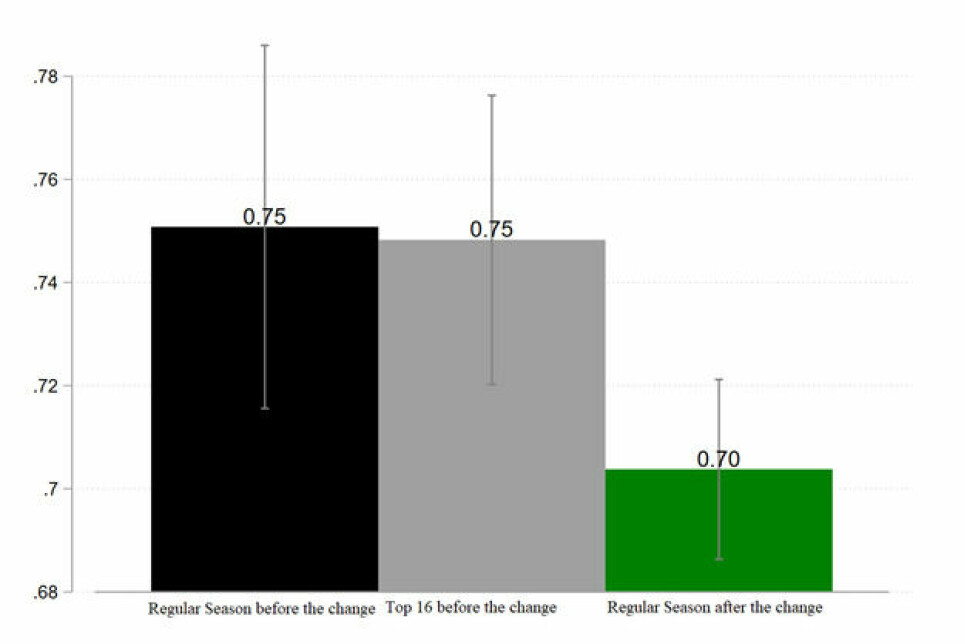Share your science:

Would more games between attractive teams increase attendance?
SHARE YOUR SCIENCE: Football authorities might have something to learn from economic theory.
In 2021, we witnessed two revolutionary proposals that rocked the world of football.
The first was the establishment (and several days later disestablishment) of the Super League. The idea was to create a new, closed league with about 20 top teams. The promoters of the idea justified it by the increased number of games between high-quality teams that will quit the well-established UEFA Champions League.
The second revolutionary proposal came from FIFA (the international governing body of association football) that decided to test the idea of having the FIFA World Cup every two years instead of every four years. FIFA authorities provide a similar justification, arguing that fans would like it because of the increased number of games between high-quality teams over a shorter period of time.
Game every week?
The main assumption of the promoters of the increased number of games between high-quality teams is that fans are willing to give up (many) other leisure activities in order to increase football consumption.
However, this seems to be a very strong assumption because of the well-known diminishing marginal utility according to which we enjoy less from additional unit of a good compared to the previous unit of the same good. Thus, it is questionable whether we will be happy to see a game every week between Real Madrid and Barcelona, for example.
We put the question to the test
To test whether an increased number of top-tier games would indeed increase attendance, Alex Krumer, a Professor of sports economics at Molde University College and his PhD student, Alessandro Di Mattia, took advantage of a structural change that appeared in the basketball’s EuroLeague, the main basketball tournament among clubs in Europe (roughly speaking, a basketball parallell of the UEFA Champions League).
According to this change, in the 2016-17 season, the EuroLegue reduced the number of teams from 24 to 16 and increased the number of games for each team. As in the case of football, the EuroLeague authorities justified this change by the belief that the fans like more attractive games in larger amounts.
Fewer fans per game
In a recent study, the researchers compared stadium attendance three seasons before and three seasons after the change (due to COVID-19, the last season used was 2018–19). Their empirical analyses showed a reduction of more than 9 percent in attendance per game after the change compared to the stage of Top 16 that was used before the change. A result that is more in line with the economic theory rather than with the beliefs of the EuroLeague’s authorities.
Attendance as the share of stadium capacity at different stages of the EuroLeague:

Obviously, basketball differs from football. However, the results of this study suggest that football authorities should not forget that an increase in consumption of one good should decrease the consumption of another (after all, we only have 24 hours a day).
Given the increasing supply of non-sports related leisure opportunities, it would be a difficult (if not impossible) task to increase football audience. Thus, it seems that “more” is not necessarily better than “less”.
Share your science or have an opinion in the Researchers' zone
The ScienceNorway Researchers' zone consists of opinions, blogs and popular science pieces written by researchers and scientists from or based in Norway.
Want to contribute? Send us an email!





























